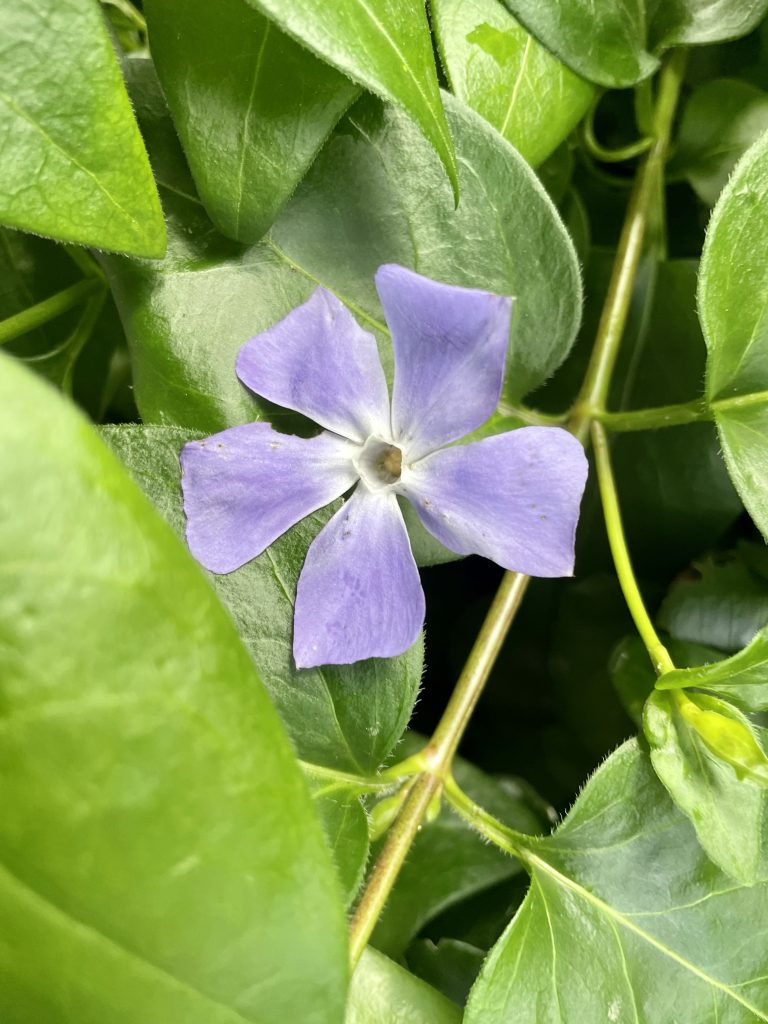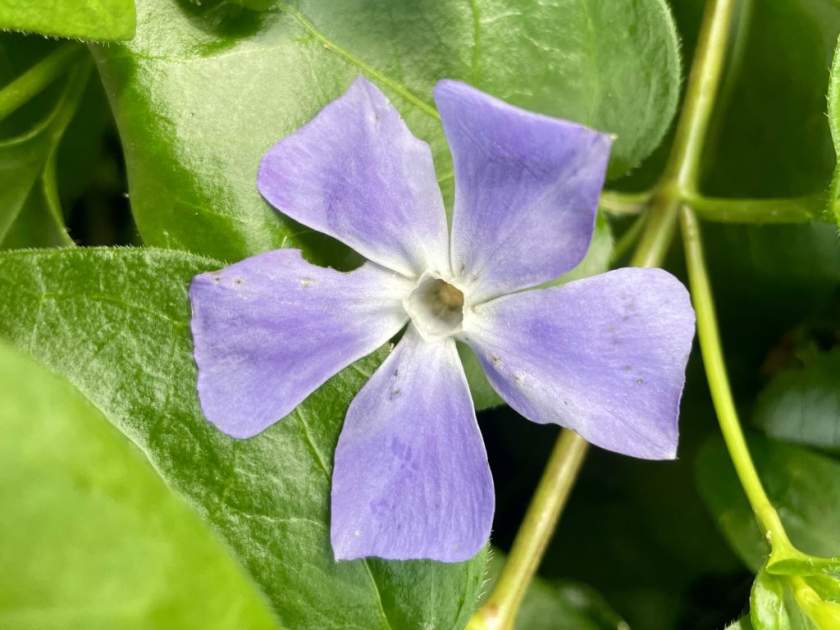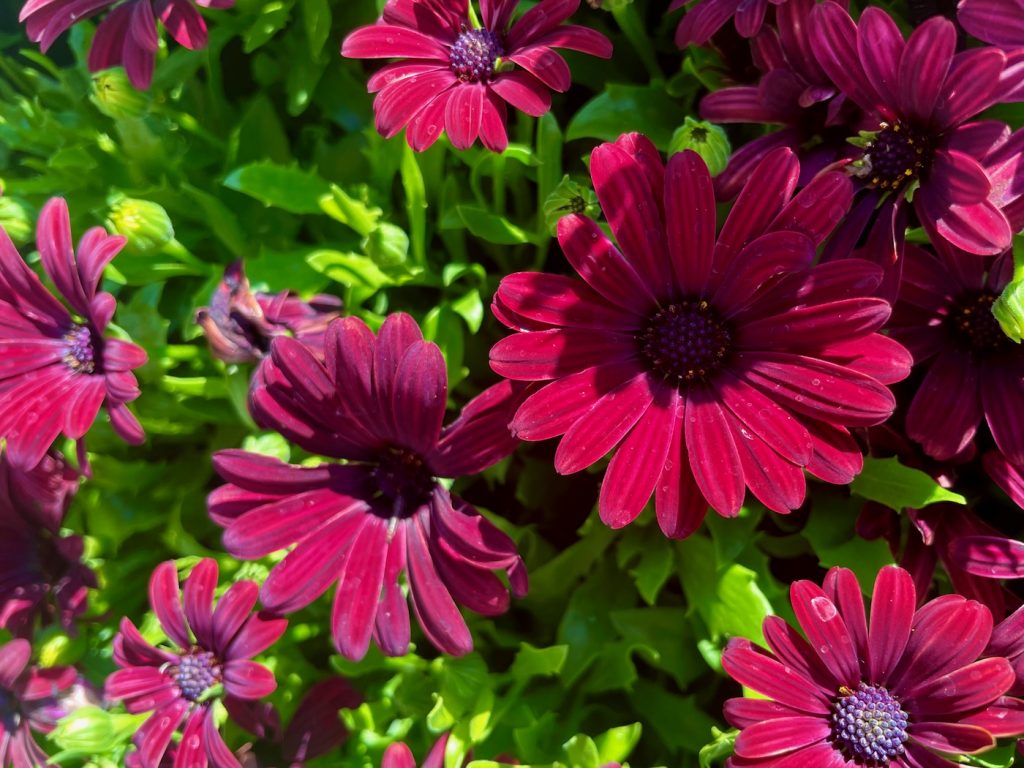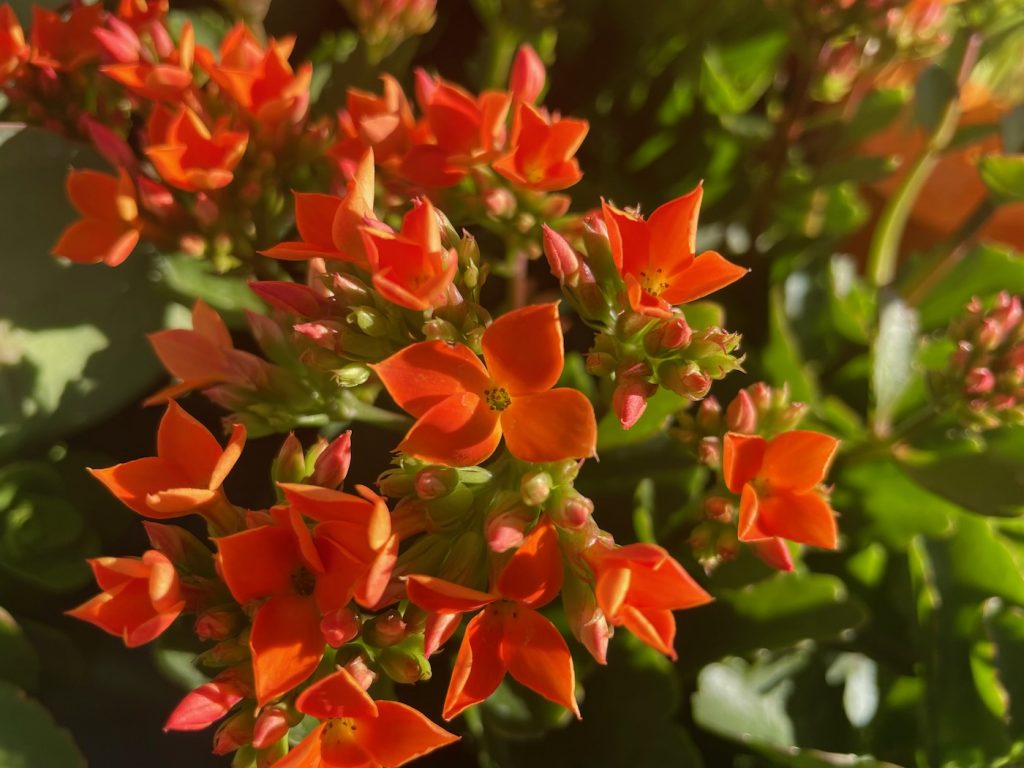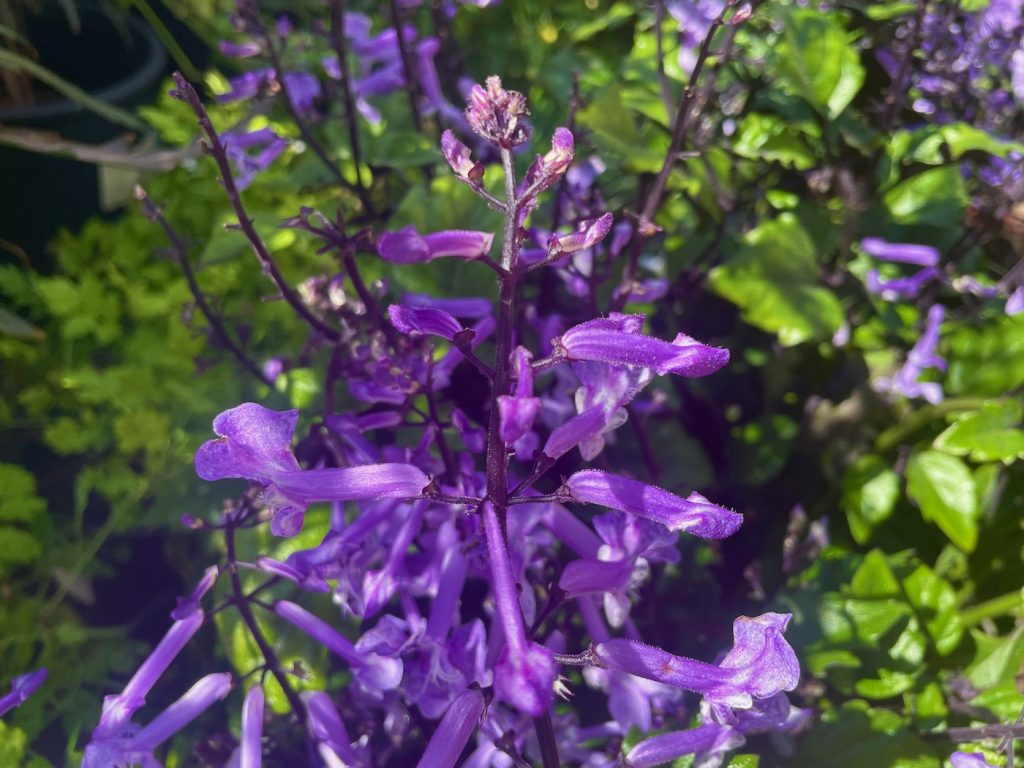Vinca major, also known as the Bigleaf Periwinkle, Blue Periwinkle, Greater Periwinkle, Creeping Myrtle, Cut-finger, Sorcerer’s Violet, Quater, Ground Periwinkle, Flower of Death, Grave Myrtle, Band Plant, or Large Periwinkle, belongs to the Apocynaceae family. This evergreen perennial is a trailing vine native to the Western Mediterranean.
Vinca major is a low-growing ground cover that reaches a height of up to 10 inches or 25 centimeters. It features long trailing vines that can spread up to 5 meters or 16 feet. The plant derives its name from the Latin word “vincire,” meaning to bind, due to its historical use in making garlands.
The leaves of Vinca major are lanceolate and arranged oppositely along the stems. They are glossy, leathery, and exhibit a vibrant shade of green. The plant produces solitary hermaphrodite flowers, approximately 5 centimeters or 2 inches in width, which boast a beautiful violet color. The flowering period of Vinca major extends from early spring through autumn.
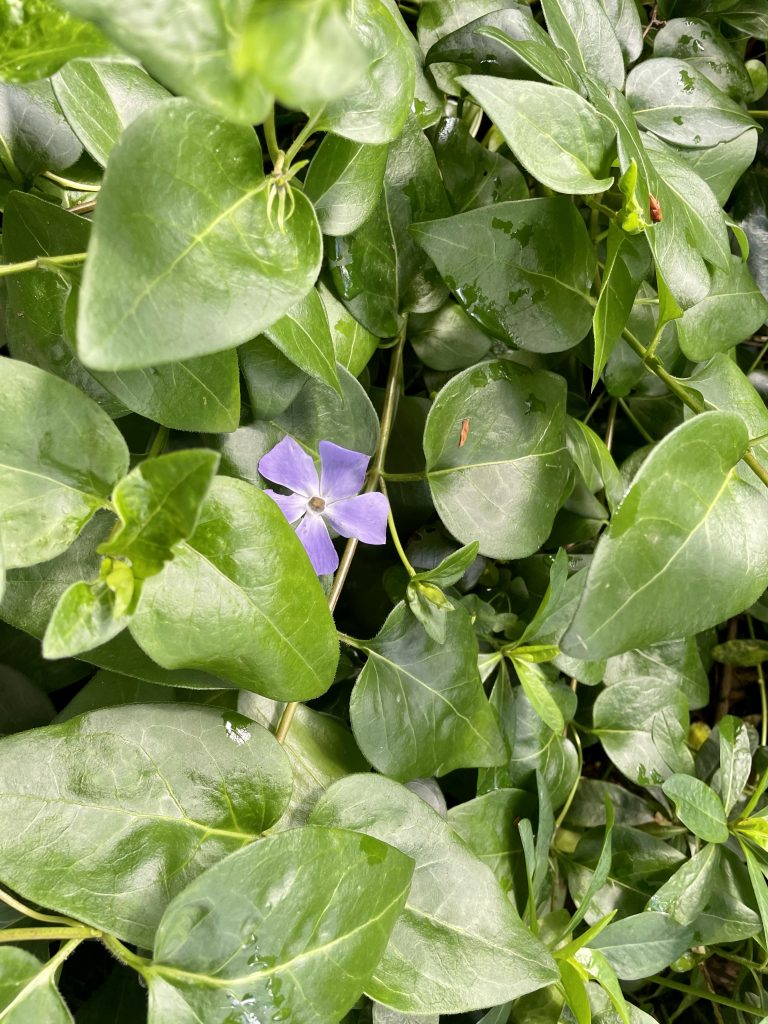
Cultivation of Vinca major:
To successfully cultivate Vinca major, follow these guidelines:
Light Requirements: Vinca major thrives in various lighting conditions, including full sun, partial shade, or full shade. However, it tends to produce more flowers when grown in sunny locations. It is important to note that excessive exposure to direct sunlight in hot climates may lead to leaf burn. Providing some shade during the hottest part of the day can help prevent this.
Soil Preference: This plant prefers moist, well-drained soil. It is adaptable to different soil types, including loam, clay, and sandy soils. Maintaining soil fertility and organic matter content contributes to the plant’s overall health and vigor.
Propagation: Vinca major can be propagated through division or semi-hardwood cuttings. Dividing the plant every few years helps control its growth and rejuvenates the plant. When using cuttings, select healthy stems and follow appropriate techniques to ensure successful establishment.
Disease and Pest Resistance: Vinca major is generally resilient to diseases and pests. However, occasional issues such as aphids or rust may arise. Regular inspection of the plant and prompt treatment if necessary will help maintain its health and appearance.
By following these cultivation recommendations, you can enjoy the beauty and versatility of Vinca major as a ground cover in your garden.
